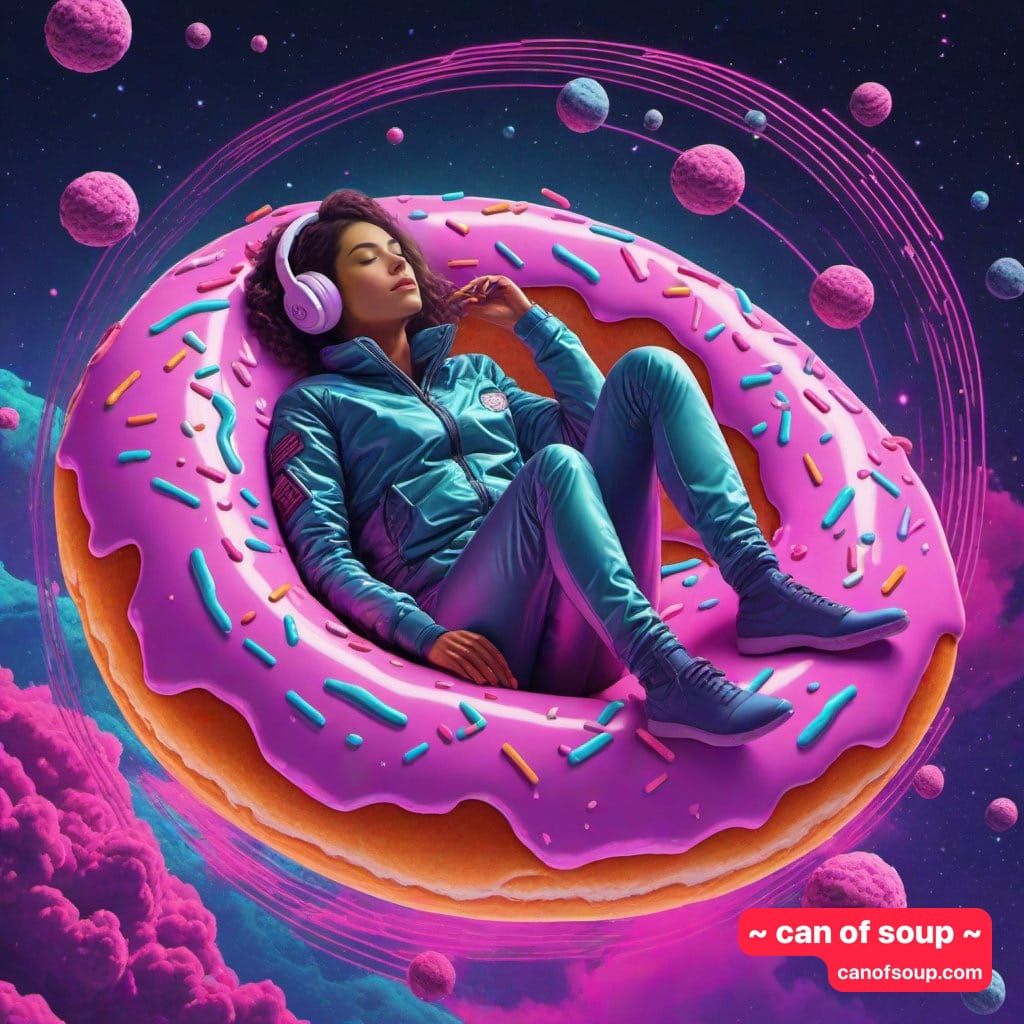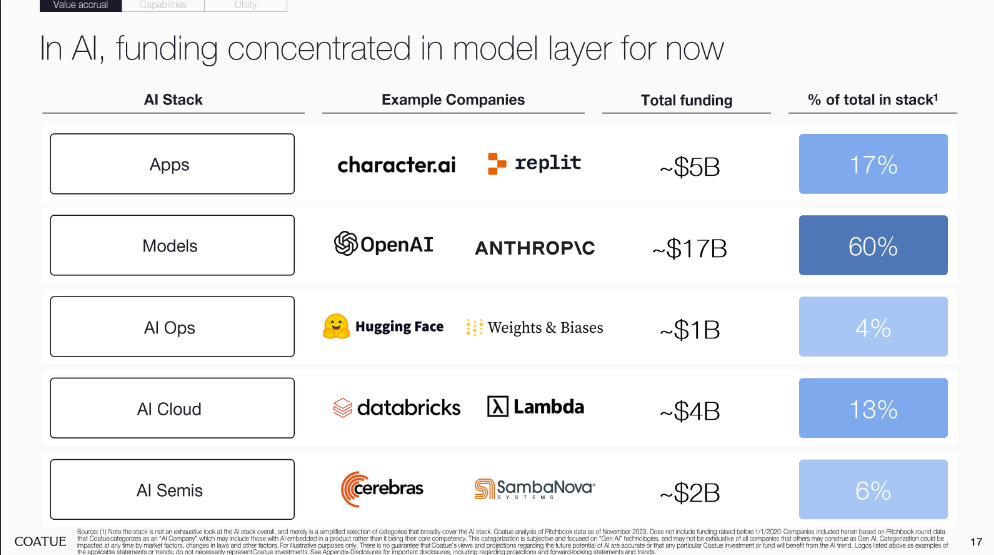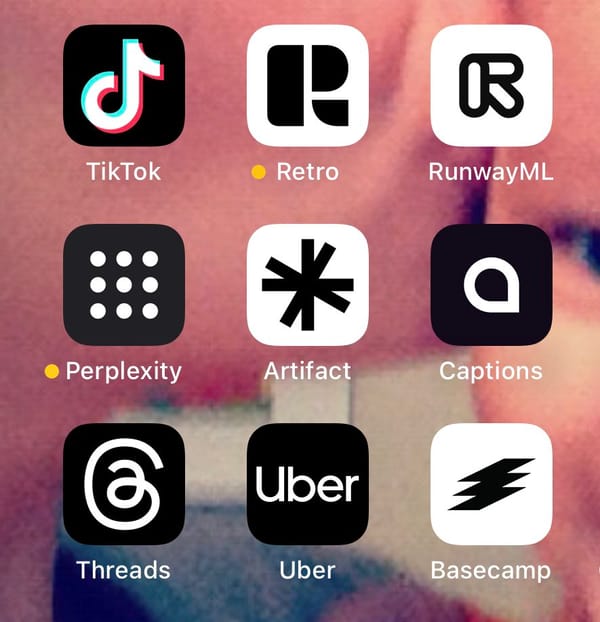Next up in AI
The App Layer Strikes Back in 2024

After the whirlwind of 2023, it’s hard to imagine a faster pace in AI development but that’s where we are headed. Acceleration isn’t just a meme on Twitter / X, it’s a reality we all constructed out of talent, capital and culture last year.
Carrying over into 2024:
- Talent concentration in AI is intense and highly motivating
- Competitive heat among AI challengers, OSS and Big Tech sets the pace
- Developer tooling is here and will accelerates app layer development
- Enterprises are allocating larger CIO / R&D budgets to AI
- Consumer awareness of AI is high but usage is low, that’s opportunity
- Culture of techno-optimism normalizing big bets, speed, ambition
So what’s next?
The App Layer Strikes Back
One likely shift in 2024 is that innovation moves up the stack.
The picks and shovels of AI are being built as we speak, from compute to foundation models to model orchestration. Once the AI infrastructure and developer tooling part of the stack starts to mature, it’s much easier for application layer startups to get started and do what they do best. Build magical user experiences, solve customer pain points, crack distribution and figure out business models (rather than source GPUs).
For some categories like Search, deep vertical integration is required but for majority of AI-native software, whether it’s consumer or B2B, having off-the-shelf dev tools accelerates experimentation.
The majority of AI funding has gone toward models + infra, only 17% toward apps (see below). That mix might change but so far that’s a good thing. We need more R&D, tooling and competition at the infra layer for novel AI apps to exist.

In the mobile wave, we needed GPS location, maps and digital payments to emerge before an Uber could exist. We’re approaching that moment in generative AI.
We now have a variety of LLMs as reasoning agents, which we can optimize for cost and performance. We can A/B test prompts to get more reliable end-products for specific use cases. We have multi-modal capabilities and 3rd party API services for synthetic voice, video, images, etc. The big unlock may still require solving for memory and personalization but we’ll get there.
Here’s 5 areas I’m excited to explore in more depth this year.
Generative Media Applications
Creativity might just beat automation as the first killer use case for Generative AI. It’s easy to see how the hallucination of generative AI models is a feature, not a bug when it comes to visual design, creative self-expression, storytelling and even social play.
Still, we need a better front-end to make generative media formats (image, video, voice, music, etc) accessible and useful for consumers, devs and b2b applications. I’d like to see more iteration on use cases and business models to scale generative media (e.g. Ideogram introducing paid subscriptions). I haven’t seen much experimentation yet with mash-up of these modalities (e.g. video + music or image + sound effects) but there’s likely a new format for self-expression to be designed and discovered there.
AI is a wonderful muse and creative partner but the commercial and consumer applications are still very much work-in-progress. I'm watching teams at VisualElectric, Modify, Genmo, Captions, Pika, ElevenLabs and others pioneering in this space. Creative tooling is where I see the biggest opportunity for TAM expansion as we democratize video editing, animation, visual design, etc.
Social media made us all photographers and writers, now we can all be artists?!
By the way, this is where talented UX designers need to jump into the game and can really make their mark. We need you!
Consumer x AI Game-Changers
Consumer utilities have always been an exciting space (think Uber, TikTok) but we’re just scratching the surface of what’s possible with AI. I call them utilities because companies in this category stand apart from the myriad of consumer apps. These are magical product experience that become habit forming and indispensable in our daily lives, reinforced by network effects and highly engaging behavioral modes. We rely on them to get stuff done, learn, shop, play, communicate and so much more.
AI has given us new tools to remove cognitive load, eliminate needless friction and reimagine core consumer experiences. This is where more founders should be thinking audaciously about what’s possible (like Perplexity has done with search and Rewind with memory).
I’d love to see more ambitious takes on:
- Search
- Productivity
- Voice assistants and wearables
- Social utilities
- Personalized commerce (shopping, travel, etc)
Apple, Meta and Google are all in the running here but they won’t do everything well and will be challenged by their own business models and inability to take big swings.
Remember, top talent is drawn to disruptive, exciting companies (Open AI case in point). Go after something truly ambitious. Consumer AI is about to have a moment.
Personal AI
If I was Tony Stark, I’d be crafting my JARVIS right now.
The big question in Consumer is what will it take to create a truly personalized and capable AI co-pilot? That magical experience of having a personal assistant that can understand our needs, enhance our intelligence and remove friction from our lives. One trained by YOU, on your data and personal preferences.
This won’t happen automatically. There has to be a deeply engaging interaction mode that makes the data collection natural and not creepy. Privacy, trust and data portability is critical. Is a voice interface and/or a new wearable needed to enable this interaction? What makes collaborating with an AI feel effortless? How do we train humans to train AI? How much do we value utility vs. empathy? TBD.
This is a frontier we might be working on for years to come. It’s one of those gnarly interdisciplinary problems where engineering, design, psychology, behavioral science, product, marketing all come together (and maybe Apple has to stumble). Only the most ambitious and capable teams will endeavor to solve this. Let's go!
Co-Pilots & Vertical Knowledge Tools
SaaS had a rough 2023 and many GPT wrapper apps will struggle. Still, there is room for new AI-native software (vertical and functional) to emerge. It’s still early!
- Vertical knowledge tools that enhance human intelligence and productivity, combining search and workflows to create that 10x productivity gain (e.g. Harvey). Combining search + workflows + usability + unique data.
- Prosumer / SMB tools that let 1 do the work of many at a fraction of the cost, either via ecosystem of agents that can be customized to individual workflows or function specific apps (e.g. video editing, bid generation, etc).
- Corporate support functions with heavy paperwork and administrative burden, such as compliance, procurement, trust & safety. The services layer inside orgs.
The hard work here is solving for customer value creation with a better designed system, one that’s model-agnostic, tuned on customer’s data, hyper-optimized for a specific use case and materially better than an upsell from existing solution (e.g. MSFT) or ChatGPT itself. Feature apps will fade, value apps will rise.
I’m most excited to see teams building vertical knowledge tools and prosumer tools since there is a lot more white space there to experiment with product + biz model.
Wild Cards
Invention happens at the intersection of founder skill and imagination.
I don’t have a crystal ball and the best ideas always come from founders anyway. I’m just hoping to meet them along the way! 👋
Finally, what to read for inspiration in 2024:
- The Creative Act by Rick Rubin
- User Friendly by Robert Fabricant and Cliff Kuang



